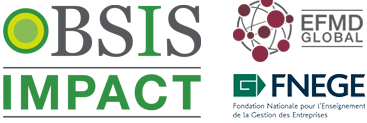Thousands of young people living in one of the most deprived areas of France are set to benefit from efforts to improve youth outreach activities.
Charities supporting at-risk youth will use a newly developed tool to help them measure and improve the success of their programmes. If adopted widely, data could be used to positively influence policies for disadvantaged communities across the country.
Val-d'Oise, a department in north central France, has one of the highest poverty rates in the country, affecting around 17% of the population. The young are some of the worst impacted, with more than 5,000 11 to 25-year-olds identified annually as not in employment, education or training (NEET), or at risk of NEET.
There are typically eight challenges that the at-risk group of NEET must overcome in order to stay in or go back to education. Challenges cover social skills and behaviour, educational and/or professional skills, relating to others, physical and mental health, emotional wellbeing, behaviour in relation to the justice system, economic situation, and autonomy/proactivity.
The Val d’Oise local authority annually commits €8m to carry out youth outreach activities. However, this funding isn’t guaranteed, and local authorities have been under increasing pressure from elected members who want budget renewals to be based on evidence of impact.
Measuring the impact of youth programmes
In Val-d'Oise, youth outreach activities are carried out by eight charities who must report to the local authority on the outcomes of their programmes. Following concerns that reports were not capturing sufficient evidence of impact, the local authority turned to the ESSEC Business School for help.
ESSEC researchers took on the challenge and have worked with youth and youth outreach organisations to create a quantitative impact assessment tool that can be used to compliment the qualitative data collected through testimonies. The idea is that data is taken from youth at the point of entry to a programme and then their progress is monitored over time. Organisations can subsequently use this information to show the change in the youth’s situation thanks to the support they receive.
The tool has been designed to support the full range of stakeholders, including the local authority, charity managers, youth workers and young people themselves. It is also versatile enough to be applied to any youth outreach charity in the country and potentially abroad.
A tool with far-reaching benefits
Equipped with this tool, charities will be able to better understand and demonstrate the impact of their organisation on young people’s lives, as well as improve their outreach services. Meanwhile, disadvantaged youths will benefit from enhanced outreach provision.
For youth workers, the tool will allow them to better understand and communicate how their work impacts the young people they are supporting, giving them additional motivation and evidence of personal performance.
Crucially, this social assessment tool will enable authorities to evaluate the success of a programme as scientifically as possible bearing in mind the complexity of social impact, as well as identify and address issues that affect specific groups in certain areas. This will ultimately lead to more informed funding and decision making.
In the next phase of the project, the tool will be tested more widely with an end goal of its adoption across the country and potentially even further. Once embedded, data produced could be used to influence the development of more targeted regional and national policies for those in disadvantaged communities.
This case study has been produced in partnership with the European Foundation for Management Development’s Business School Impact System (BSIS). BSIS is a pioneering impact assessment tool used by business schools worldwide

